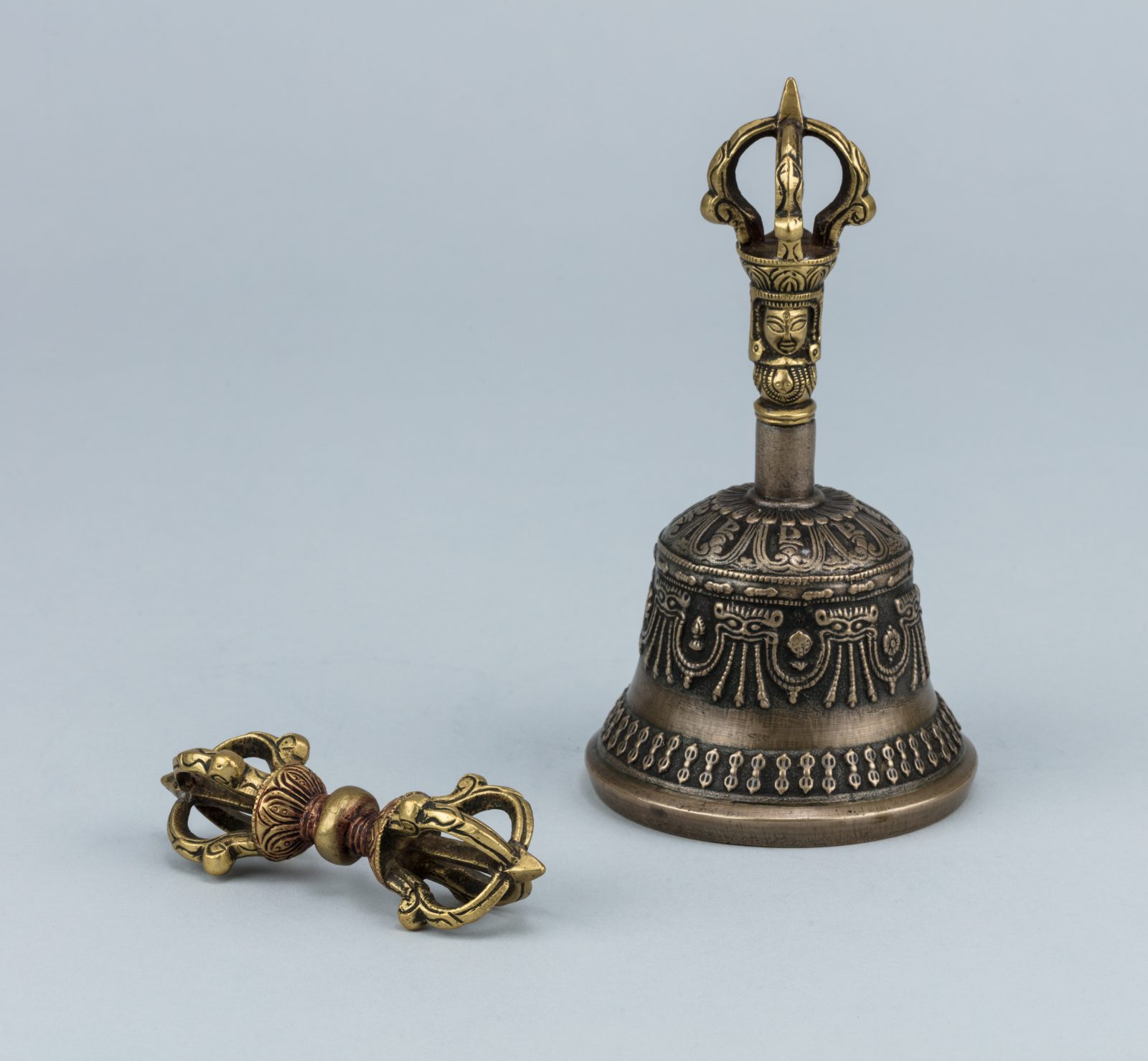

This week’s meditation session is led by Tracy Cochran and the theme is Growth. The guided meditation begins at 17:15.

Five-prong Bell & Dorje Set; Probably Urga or Dolonor, Mongolia; ca. late 19th century; Silver, metal (Li, five-metal compound); Rubin Museum of Himalayan Art, Gift of Phillip J. Rudko; C2014.7.4a-b
The vajra and bell—the two most common ritual implements used in Tibetan Buddhism—have particular significance in empowerment ceremonies. The vajra, a type of scepter, represents compassion, firmness, the uprooting of suffering, and that which is immovable, indestructible, and imperturbable. The bell represents wisdom (about the true, empty nature of reality) and the propagation of the truth. When the vajra and bell are used in an empowerment ritual, their combined compassion and wisdom are a means to liberate sentient beings from suffering.

Tracy Cochran has taught meditation and spiritual practice for many years. She is a speaker and author whose most recent book, Presence: The Art of Being At Home in Yourself, was published by Shambhala Publications in 2024. Tracy is the founder and leading teacher of the Hudson River Sangha and has taught mindfulness and mindful writing at New York Insight, the Rubin Museum of Himalayan Art, and many other venues. In addition to serving as the editorial director of the acclaimed spiritual quarterly Parabola, her writings have appeared in The New York Times, New York Magazine, Psychology Today, The Best Spiritual Writing series, Parabola, and many other publications and anthologies. For more about Tracy, please visit tracycochran.org and parabola.org.
Get the latest news and stories from the Rubin, plus occasional information on how to support our work.